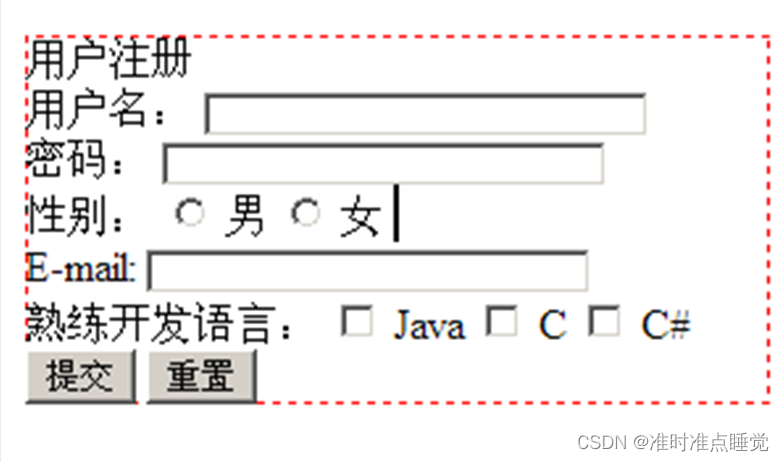uni-app(前端) + Spring Boot(后端) 获取微信小程序用户的唯一标识(openid 和 unionid)的完整实现方案,包含详细的代码和注释
uni-app(前端) + Spring Boot(后端) 获取微信小程序用户的唯一标识(openid 和 unionid)的完整实现方案,包含详细的代码和注释
·
以下是 uni-app(前端) + Spring Boot(后端) 获取微信小程序用户的唯一标识(openid 和 unionid)的完整实现方案,包含详细的代码和注释。
✅ 一、前端:uni-app 获取 code
📄 文件路径:pages/login/login.vue
<template>
<view class="login-container">
<button @click="weChatLogin">微信登录</button>
</view>
</template>
<script>
export default {
methods: {
async weChatLogin() {
try {
// 调用微信登录接口,获取临时登录凭证 code
const [err, res] = await uni.login({
provider: 'weixin', // 微信登录
});
if (err) {
uni.showToast({ title: '登录失败', icon: 'none' });
console.error('登录失败:', err);
return;
}
const code = res.code;
console.log('获取到的登录凭证 code:', code);
// 将 code 发送到后端服务
const response = await uni.request({
url: 'https://yourdomain.com/api/wechat/login', // 替换为你的后端地址
method: 'POST',
data: {
code,
},
});
const { openid, unionid } = response.data;
console.log('获取到的用户标识:', { openid, unionid });
uni.showToast({ title: '登录成功' });
// TODO: 可以将 openid 存入本地缓存或跳转页面
} catch (e) {
uni.showToast({ title: '系统异常', icon: 'none' });
console.error('发生异常:', e);
}
},
},
};
</script>
<style scoped>
.login-container {
padding: 20px;
}
</style>
✅ 二、后端:Spring Boot 接收 code 并请求微信服务器
📁 项目结构建议:
com.example.wechatdemo
├── controller
│ └── WeChatController.java
├── service
│ └── WeChatService.java
├── config
│ └── WeChatConfig.java
└── dto
└── WeChatResponse.java
📄 1. 配置类:WeChatConfig.java
@Component
@Configuration
public class WeChatConfig {
// 微信小程序 AppID(在微信公众平台申请)
@Value("${wechat.appid}")
private String appId;
// 微信小程序 AppSecret(在微信公众平台申请)
@Value("${wechat.secret}")
private String appSecret;
// 微信登录凭证校验接口 URL
public static final String LOGIN_URL = "https://api.weixin.qq.com/sns/jscode2session";
public String getAppId() {
return appId;
}
public String getAppSecret() {
return appSecret;
}
}
💡 在
application.yml中配置:
wechat:
appid: your_appid_here
secret: your_appsecret_here
📄 2. 响应对象:WeChatResponse.java
@Data
@NoArgsConstructor
@AllArgsConstructor
public class WeChatResponse {
private String openid; // 用户唯一标识
private String unionid; // 跨应用统一标识(需绑定开放平台)
private String session_key; // 会话密钥
private Integer errcode; // 错误码
private String errmsg; // 错误信息
}
📄 3. 服务类:WeChatService.java
@Service
public class WeChatService {
@Autowired
private RestTemplate restTemplate;
@Autowired
private WeChatConfig weChatConfig;
/**
* 根据 code 获取微信用户的 openid 和 unionid
*/
public WeChatResponse getWeChatUserInfo(String code) {
String url = String.format("%s?appid=%s&secret=%s&js_code=%s&grant_type=authorization_code",
WeChatConfig.LOGIN_URL,
weChatConfig.getAppId(),
weChatConfig.getAppSecret(),
code);
ResponseEntity<String> responseEntity = restTemplate.getForEntity(url, String.class);
String responseBody = responseEntity.getBody();
ObjectMapper mapper = new ObjectMapper();
try {
return mapper.readValue(responseBody, WeChatResponse.class);
} catch (Exception e) {
throw new RuntimeException("解析微信返回数据失败", e);
}
}
}
📄 4. 控制器类:WeChatController.java
@RestController
@RequestMapping("/api/wechat")
public class WeChatController {
@Autowired
private WeChatService weChatService;
/**
* 接收前端传来的 code,并返回微信用户信息
*/
@PostMapping("/login")
public ResponseEntity<?> login(@RequestBody Map<String, String> payload) {
String code = payload.get("code");
if (code == null || code.isEmpty()) {
return ResponseEntity.badRequest().body(Map.of("error", "缺少登录凭证"));
}
WeChatResponse response = weChatService.getWeChatUserInfo(code);
if (response.getErrcode() != null && response.getErrcode() != 0) {
return ResponseEntity.status(500).body(Map.of("error", response.getErrmsg()));
}
return ResponseEntity.ok()
.body(Map.of(
"openid", response.getOpenid(),
"unionid", response.getUnionid()
));
}
}
📊 三、总结对比表
| 步骤 | 使用 API | 是否必须 | 作用说明 |
|---|---|---|---|
前端调用 uni.login() |
✅ 是 | 获取临时登录凭证 code |
|
前端发送 code 到后端 |
✅ 是 | 安全性要求,防止敏感操作暴露在前端 | |
后端调用微信接口 jscode2session |
✅ 是 | 获取 openid 和 unionid |
|
获取 openid |
✅ 是 | 每个小程序内的用户唯一标识 | |
获取 unionid |
❌ 否(可选) | 多应用之间识别同一用户(需绑定开放平台) |
🧭 四、注意事项
| 项目 | 说明 |
|---|---|
| 微信 AppID 和 AppSecret | 必须在微信公众平台注册并配置 |
| 微信开放平台绑定 | 如需跨小程序/公众号识别用户,需绑定开放平台 |
code 的时效性 |
有效期为 5 分钟,且只能使用一次 |
| 后端安全处理 | 不要在前端直接调用微信接口,避免泄露 AppSecret |
| 返回字段安全性 | session_key 不能暴露给前端,用于后续加密解密操作 |
✅ 最佳实践建议
- 前端使用
uni.getUserProfile获取用户昵称头像等公开信息 - 使用
uni.login()获取code,并由后端换取openid/unionid - 不要在前端直接调用微信的
jscode2session接口 - 后端验证
openid是否已存在数据库,进行登录或注册逻辑
如需进一步实现 解密用户敏感数据(如手机号) 或 JWT 登录态管理,请继续提问,我可以为你提供完整扩展方案。
更多推荐
 已为社区贡献43条内容
已为社区贡献43条内容








所有评论(0)